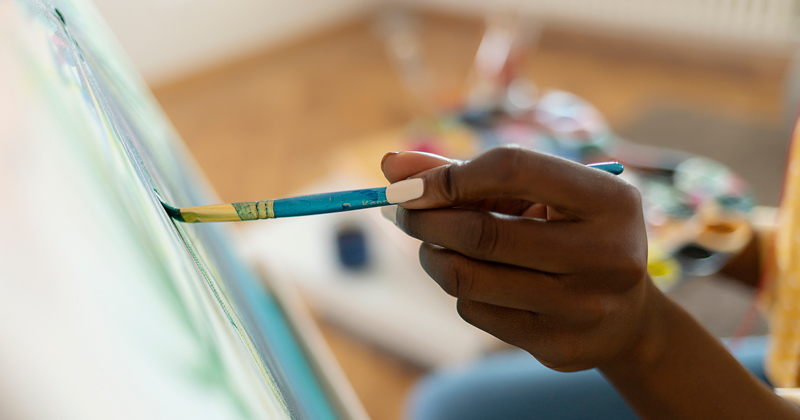In 2018, the creative industries were worth £111 billion to the UK economy. In 2019, arts and culture alone were worth £10.8 billion, or 0.5 per cent of UK economic output. Then the pandemic came, and by the fourth quarter of 2020, government research shows art and culture output was down 46 per cent year on year. A Department for Culture, Media and Sport report called the pandemic “the biggest threat to the UK’s cultural infrastructure, institutions and workforce in a generation”.
Part of that infrastructure is the pipeline that leads young people to choose careers in the arts – education. Sadly, Ofsted’s reports on the impact of Covid were no more encouraging on that front, warning a narrowing curricular experience, with the arts particularly affected.
Of course, this follows years of concern about narrowing curriculum and the erosion of arts provision in schools. ‘Building back better’ for the sector will therefore require education to play its part, but how?
Our initial research for arted – an international project that aims to support teachers in using the practices of artists across the curriculum – leads us to conclude that there has never been a greater need for artists to work with young people in schools.
In fact, the Ofsted Covid impact report noted specifically that children were missing out on practical work as well as enrichment opportunities through “outside speakers, theatre or dance groups”.
Yet our research shows that artists are important role models for children, sharing the processes of their craft and making learning real. Young people start to think, “That person is an artist, I can be an artist too”. And the impact isn’t just on their professional aspirations; it can have a real impact on their confidence and wellbeing.
The kind of seismic shift in policy thinking we need is almost unimaginable
The impact isn’t limited to pupils, either. Our research demonstrates that when teachers and artists work collaboratively, it can transform the practices of both. Working alongside artists can develop teachers’ understanding of the creative process and the skill of modelling as a teaching tool. It can also help teachers establish cross-curricular links.
Sadly, given its benefits, we find that this work is severely restricted in the UK as well as across Europe. Indeed, our initial survey of policy and funding demonstrates how limited such opportunities are.
Iceland’s Art for All policy is a notable exception, and their experience of artists working readily with teachers in schools is particularly informative for our work to address these systemic challenges. The kind of seismic shift in policy thinking needed to bring us in line with Iceland is almost unimaginable. But through arted, we hope to support schools to make the most of opportunities nonetheless.
The Erasmus+ funded project is bringing together artists, teachers, young people, researchers and policy makers from across Europe to develop open-access interactive guides for teachers on how to implement artistic practices from the visual and expressive arts in primary and secondary schools. Drawing upon the expertise of participants, arted’s guides are currently being co-designed by artists in schools.
Each activity in the guides starts with a single object of intercultural significance as a stimulus. These activities are then structured like recipe books, outlining the required ingredients and a suggested method that experienced teachers can personalise and adapt. And while the activities are in essence artistic, their links to other curriculum areas are made explicit.
Of course, we understand that artistic processes are idiosyncratic and complex. Our aim throughout is therefore to ensure that this sophistication is respected, while ensuring each activity is accessible to even the least artistically confident teacher. To walk this fine line, our guides will include links to videos of artists explaining their work.
It’s not quite the same as having the artist there in the classroom. But in the age of remote learning and Zoom meetings, it’s a familiar approximation. And in anticipation of that seismic policy shift, it’s a good place to start to rebuild our cultural infrastructure.
The arted project is ongoing, and to ensure our guides are as impactful as possible, we are inviting teachers and schools to help in their co-production. Visit www.arted-eu.org/about to find out more.



Your thoughts